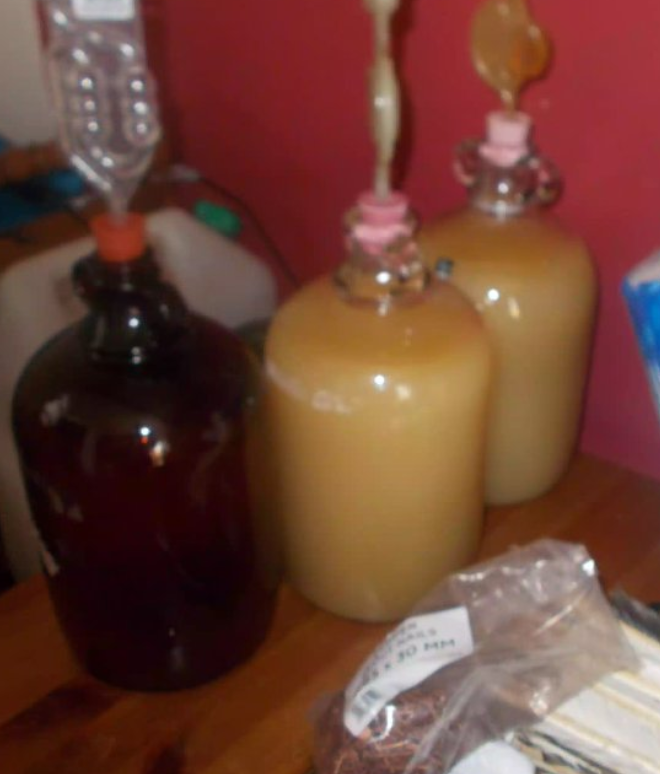Mr impatient
Well-Known Member
I have watched the threads for a few days I have read up on things that seem relevant to my situation but I am still no closer to being proficient or sure about what I do.
I am going to sort out my 3 gallon must today, Firmentation stoped within 4 hours of adding the yeast, but not before causing an explosion of froth and gunk which covered the undrstairs and hallway. I would have sorted it by now (yes I have cleaned up) but I have been told "leave it alone it will be OK", it has now been 4 weeks and if it needs throwing away it's better down the loo, if I can rescue it I will but considering that the contents have separated into two distinct liquids I don't hold out much hope and I only have my nose (smell) to go on.
I am also going to re-rack two demijohns I put away at Christmas and take a reading. I will take a reading of the 3 gallon as it is done and everything is going into clean Demijohns as long as it has not gone off.
If the larger quantity is still at 0.88 gravity then I will add a turbo yeast to sort it out.
I am going to sort out my 3 gallon must today, Firmentation stoped within 4 hours of adding the yeast, but not before causing an explosion of froth and gunk which covered the undrstairs and hallway. I would have sorted it by now (yes I have cleaned up) but I have been told "leave it alone it will be OK", it has now been 4 weeks and if it needs throwing away it's better down the loo, if I can rescue it I will but considering that the contents have separated into two distinct liquids I don't hold out much hope and I only have my nose (smell) to go on.
I am also going to re-rack two demijohns I put away at Christmas and take a reading. I will take a reading of the 3 gallon as it is done and everything is going into clean Demijohns as long as it has not gone off.
If the larger quantity is still at 0.88 gravity then I will add a turbo yeast to sort it out.




